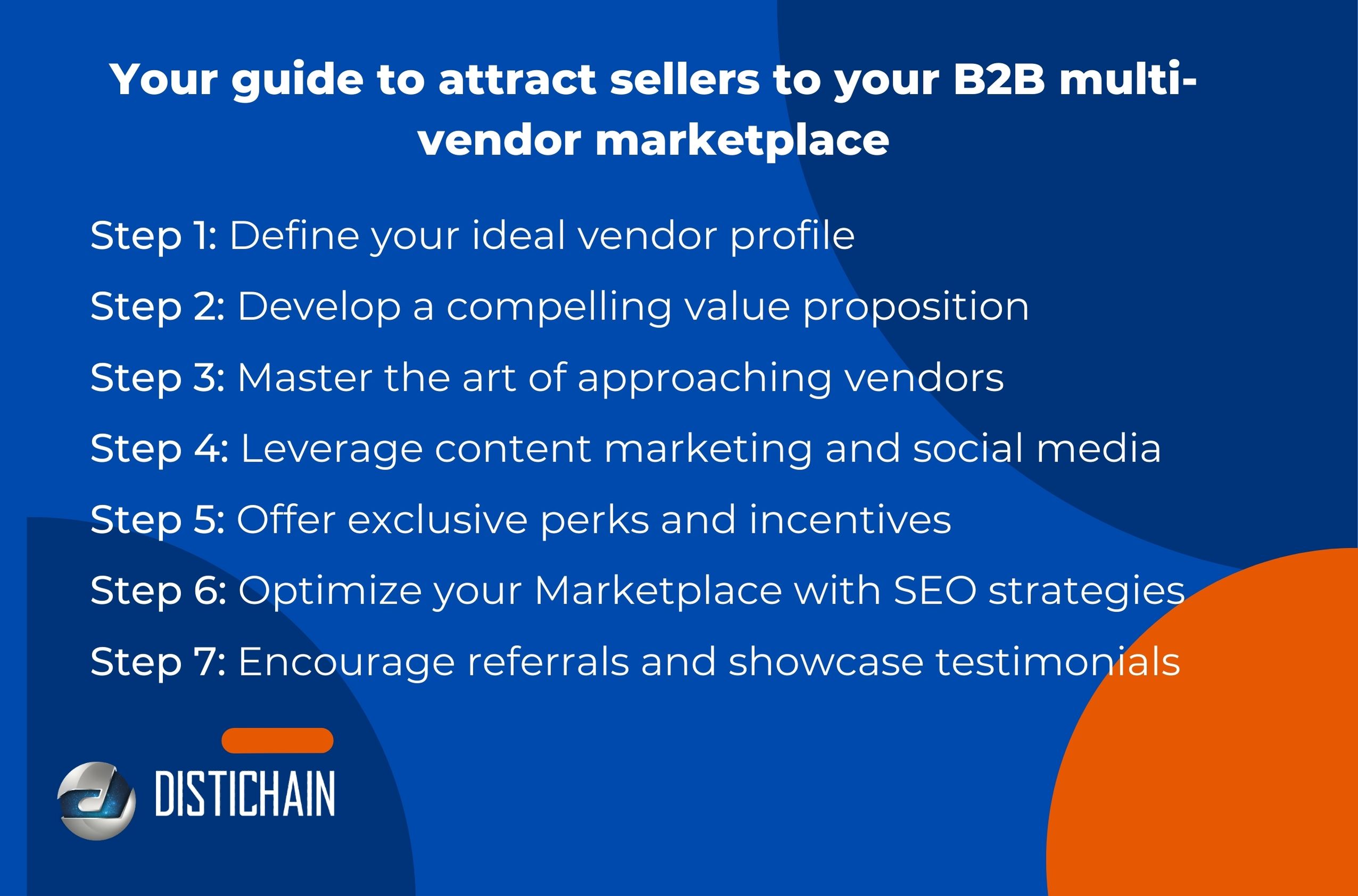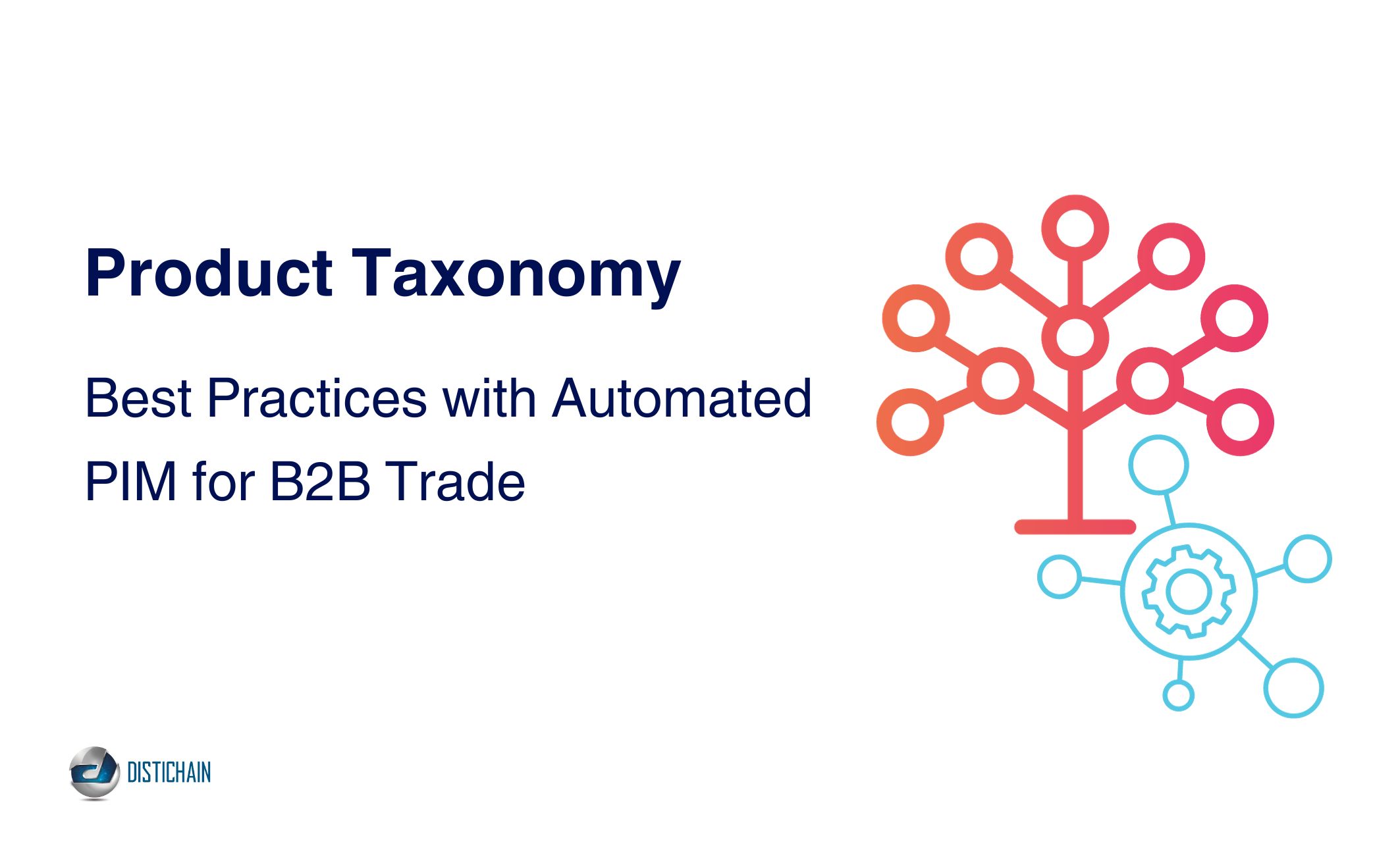Looking to create a thriving B2B multi-vendor marketplace that attracts top-quality vendors and drives business growth? Discover the secret to cultivating a dynamic ecosystem where businesses collaborate, unlock new opportunities, and fuel innovation.
Learn how to leverage powerful strategies and practical tips in this comprehensive step-by-step guide.
Setting the Foundation for Your Journey
When taking the first step to creating a B2B multi-vendor marketplace, remember that you’ll be paving the way for an expansive network of businesses to collaborate, innovate, and thrive.
Imagine your marketplace as a bustling digital space, where companies forge meaningful partnerships, share unique products and services, and elevate the B2B landscape. An ecosystem like this lies in meticulous planning and strategic execution.
So how do you start? By setting a defined goal. No matter how you go about your journey, a tangible goal will help you stay focused despite any bumps in the road.
Remember, you’re not just constructing a virtual marketplace. In fact, you’re cultivating an environment that empowers businesses to prosper.

Step 1: Define Your Ideal Vendor Profile
Assembling a B2B multi-vendor marketplace is like curating a winning team, with each vendor contributing unique strengths. This first step ensures a strong foundation for fruitful partnerships and paves the way for mutual success.
Determine Your Target Vendor Market
Begin by examining the various industries and market segments that align with your platform’s vision and objectives. Narrow it down to pinpoint the types of businesses that can enjoy and contribute to your marketplace’s success.
Focusing on a well-defined target vendor market ensures that the right ones are attracted to join and grow alongside your platform.
Recognize Essential Vendor Attributes
Once you have identified your target vendor market, it’s crucial to delineate the key attributes you expect in your ideal vendors. These attributes include the quality of products or services, pricing, reliability, and scalability. Establishing clear criteria for vendor selection promotes trust and credibility within your marketplace.
Step 2: Develop a Compelling Value Proposition
To build a thriving B2B multi-vendor marketplace, presenting a value proposition (VP) that sets you apart from competitors is essential. Either alongside or as your VP, here are a few points to bring on top-notch vendors:
Offer Competitive Pricing and Fair Commission Rates
Attracting quality vendors starts with offering competitive pricing and fair commission rates. Ensure transparent and reasonable marketplace fees and pricing structure to encourage new joiners (and loyal members).
Remember that fair pricing benefits the vendors and contributes to the marketplace’s health, leading to more satisfied customers and long-term success.
Provide Powerful Vendor Tools and Resources
One of the keys to a thriving multi-vendor marketplace is empowering your vendors with the tools and resources they need to succeed. Offer user-friendly management dashboards, data analytics, and marketing tools that enable vendors to optimize their performance and grow their businesses. You show your commitment to their success by providing valuable resources and fostering a collaborative and innovative environment.
Ensure Seamless Onboarding and Ongoing Support
An efficient onboarding process and ongoing support are crucial for a smooth vendor experience. Streamline your onboarding with clear guidelines, helpful tutorials, and personalized assistance, ensuring that vendors can easily navigate your platform and start selling.
Also, maintain a reliable support system that addresses concerns, resolves issues, and offers valuable insights to help them flourish in your marketplace. This commitment to success will foster trust and create lasting partnerships.
Step 3: Master the Art of Approaching Vendors
Attracting the right vendors to your B2B multi-vendor marketplace requires a strategic and personalized approach. Approaching vendors is both an art and a science. Ultimately, it lies in reaching out and grabbing their attention.
Use Strong Outreach Techniques
Successful vendor outreach starts with tailored and impactful techniques. First, research each prospective vendor to understand their unique needs and pain points.
After this, you can craft personalized messages highlighting your platform’s VP. A targeted approach will capture the attention of your ideal vendors and increase the likelihood of onboarding.
Engage in Online and Offline Networking Opportunities
Networking is essential for connecting with potential vendors and showcasing your platform. Attend trade fairs and conferences to build relationships with businesses in your target market and onboard vendors on the spot.
Also, participate in online networking through industry forums, social media groups, and webinars. Leverage online and offline networking to broaden your reach and attract high-quality vendors.
Deliver Compelling Sales Pitches and Presentations
Finally, refine your sales pitch and presentation skills to effectively communicate the benefits of joining your B2B multi-vendor marketplace. Emphasize your platform’s unique advantages, such as competitive pricing, powerful tools, and ongoing support.
A persuasive narrative highlighting the potential for mutual growth and success will pique interest and drive them to your platform.
Step 4: Leverage Content Marketing and Social Media
Lifting your B2B multi-vendor marketplace’s visibility and credibility relies on effective content marketing and social media strategies. Combine these tried-and-true strategies with offline approaches to attract and retain top-quality vendors.
Boost Vendor Success Stories and Case Studies
Sharing vendor success stories and case studies is a powerful way to showcase the benefits of joining your marketplace. Highlight the growth, achievements, and innovative solutions made possible with your platform. Demonstrating the tangible advantages vendors gain from partnering with you will inspire trust, credibility, and interest in your marketplace.
Share Industry News and Insights
Not only should you discuss your platform, but you should also position it as a thought leader. Focus on industry news and insights through posting:
- Blog posts
- Social media updates
- Email newsletters
Offering valuable content helps you interact with your audience and establishes your marketplace as a trusted source of information. Stay up-to-date and informed, and vendors will appreciate your commitment to their growth and success!
Build a Strong Online Brand Presence
Online presence is essential for attracting and retaining vendors in today’s digital landscape. Leverage social media platforms, search engine optimization (SEO), and influencer partnerships to amplify reach and engagement. Consistently showcase your brand values, mission, and unique selling points to resonate with your audience.
Step 5: Offer Exclusive Perks and Incentives
Attracting top-quality vendors to your B2B multi-vendor marketplace requires offering exclusive perks and incentives that set you apart. Here are a few ways to entice vendors to join and excel on your platform:
Launch Early Adopter Discounts and Promotions
Early adopter discounts and promotions incentivize vendors to join your platform during its initial stages. Vendors are especially keen on reduced fees, complimentary services, or other special offers.
You’ll encourage businesses to become part of your marketplace, setting the foundation for a thriving ecosystem.
Create Tiered Reward Programs for High Performers
Rewarding high-performing vendors with tiered programs further motivates them to excel. Take it a step further by gamifying them. Implement a system where vendors can earn badges, achieve higher status levels, or gain exclusive benefits based on performance.
A thriving ecosystem encourages individual success and fosters healthy competition. When these two bases are covered, you can drive growth and innovation within your marketplace.
Organize Partnership Opportunities and Collaborative Events
Lastly, create opportunities for vendors to collaborate, network, and learn from each other through partnership programs and events. Organize webinars, workshops, or virtual meetups that enable vendors to share knowledge, form alliances, and explore new business opportunities.
By fostering a collaborative environment, you’ll strengthen your marketplace community and contribute to the long-term success of your platform.
Step 6: Optimize Your Marketplace with SEO Strategies
As mentioned in step 4, building a solid online brand presence is crucial for your B2B multi-vendor marketplace’s success. One key component of achieving this is implementing effective SEO strategies.
Conduct Targeted Keyword Research and Implementation
Keyword research is the foundation of any successful SEO strategy. Identify relevant, high-traffic keywords related to your target market and niche, then strategically implement them throughout your platform’s content, including titles, meta descriptions, and URLs. This targeted approach ensures your marketplace ranks higher in search engine results, increasing visibility for potential vendors and customers.
Build High-Quality Backlinks
Backlinks from reputable websites improve your ranking and credibility. Develop relationships with industry influencers, reputable blogs, and other online platforms to secure guest posting opportunities, collaborations, or interviews. By obtaining high-quality backlinks, you’ll drive referral traffic and increase authority in the eyes of both search engines and potential vendors.
Produce Engaging and Optimized Content Regularly
Finally, regularly create and share engaging, SEO-optimized content to maintain and improve your search engine rankings. Produce blog posts, articles, and multimedia content that showcases your marketplace’s unique features, industry insights, and vendor success stories.
This ties into sharing industry news and insights. When consistently offering valuable content, you’ll attract and retain vendors while strengthening your online presence and brand image.
Step 7: Encourage Referrals and Showcase Testimonials
As the final step in creating a thriving B2B multi-vendor marketplace, harness the power of referrals and testimonials to strengthen your platform’s credibility and attract new vendors.
Foster a Community of Vendor Advocates
Cultivate relationships with your existing vendors to turn them into advocates for your platform. Encourage sharing positive experiences, offering constructive feedback, and recommending your marketplace to potential vendors. This nurtured community will generate valuable word-of-mouth marketing, a massive bonus for attracting vendors.
Display Positive Reviews and Ratings
Showcase positive reviews, ratings, and testimonials on your platform. Remember the badges from step 5? Consider featuring them here to highlight top-rated vendors or exceptional customer experiences. This gives credibility while reassuring potential vendors of your platform’s value and reliability.
Develop an Attractive Vendor Referral Program
Finally, create an enticing vendor referral program that rewards existing vendors for bringing new businesses to your platform. Offer incentives such as reduced fees, extra services, or exclusive perks to motivate vendors to refer their peers. An attractive referral program expands your vendor base. It fosters community and collaboration within your marketplace, setting the stage for long-term success.
Long-Term Steps

To guarantee lasting growth, focus on long-term strategies that involve monitoring and improved performance.
One important aspect is keeping track of key numbers related to vendor acquisition, such as:
- New joiners
- Potential vendors to active members
- Leavers
Watching these figures can identify areas of improvement and help you make informed choices to make your marketplace thrive.
Furthermore, refining your marketplace’s features and capabilities is crucial for ongoing success. Focus on gathering vendor feedback and providing valuable information on what’s working well and needs improvement to make targeted changes that enhance the experience, simplify processes, and encourage new ideas.
Final Thoughts
Building a successful B2B multi-vendor marketplace requires careful planning, strategic execution, and a long-term commitment to improvement.
Incorporate these essential steps and adopt a proactive approach to your marketplace’s growth to create a successful B2B multi-vendor platform.
Looking to launch your multi-vendor platform? Learn how today.












